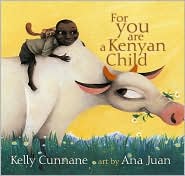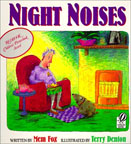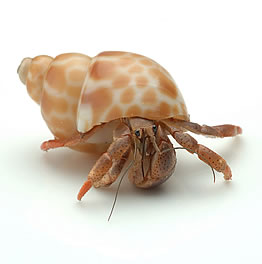Bibliography: Fanning the Flames
AIMA Summer 2010 Conference
Leslie Sharbel
Library Media Specialist
Vestavia Hills Elementary Cahaba Heights
sharbelle@vestavia.k12.al.us
Slide 3: Lee Bennett Hopkins quote: "I believe we spend too much time teaching children to read--and not enough time teaching them to love to read. Get the difference." 2/27/2008
Slide 4,5,6: article:
Tanya Plibersek "Love of Reading Opens Up World of Possibilities", http://www.smh.com.au/articles/2007/12/11/1197135459491.html
Slide 15: Booktalks
The Magician’s Elephant by Kate DiCamillo, 2009
Weird School series by Dan Gutman,
Various Newbery winners. See list at:
http://www.ala.org/ala/mgrps/divs/alsc/awardsgrants/bookmedia/newberymedal/newberyhonors/newberymedal.cfm
The White Giraffe by Lauren St. John, 2006
Three Cups of Tea by Greg Mortensen, 2009
Lawn Boy by Gary Paulsen, 2007
Slide 16: Read-Alouds
Guys Write for Guys Read by Jon Scieszka, 2005
Jumpstart Read for the Record: http://www.readfortherecord.org/site/PageServer
Coming up: October 7, 2010: The Snowy Day by Ezra Jack Keats
Very Hungry Caterpillar by Eric Carle, 1969
Butterflies by Joni Phelps Hunt, 1992
Where Butterflies Grow by Joanne Ryder, 1989
Flutter by, Butterfly by Densey Clyne, 1998
Butterfliesby Kevin J. Holmes, 1998
Our Living World: Insects by Jenny Tesar, 1993
Velma Gratch and the Way Cool Butterfly by Alan Madison, 2007
Monarchs by Kathryn Lasky, 1993
I Wonder What It’s Like to Be a Butterfly by Eric M. Hovanec, 2000
The Moon of the Monarch Butterflies by Jean Craighead George, 1968
Monarch Butterfly Journey North:
http://www.learner.org/jnorth/monarch
Lincoln: A Photobiography by Russell Freedman, 1987
My Brother Martin by Christine King Farris, 2003
Barack Obama: Son of Promise, Child of Hope by Nikki Grimes, 2008
Slide 17: Picture Books
Teach with Picture Books blog: http://teachwithpicturebooks.blogspot.com/
All About Picture Books: A Bibliography http://www.suelebeau.com/picturebooks.htm
Picture-Book-Inspired Writing Lessons http://writingfix.com/picture_book_prompts.htm
Reading Workshop http://www.effectiveteachingsolutions.com/readingworkshop.htm
Scholastic Using Picture Books to Teach Comprehension Strategies (Grades 2-5) by
Joanne M. Zimny, 2008 I like to use this with grade 4.
Scholastic Teaching with Favorite Read-Alouds in Kindergarten by Susan Lunsford,
2004 Also available by the same author: PreK, First Grade, and Second Grade.
Scholastic Teaching Math with Favorite Picture Books (Grades 1-3) by Judi Hechtman
and Deborah Ellermeyer, 1998.
The Moon Over Star by Dianna Hutts Aston, 2008
The Scarlet Stocking Spy by Trinka Hakes Noble, 2004
Beatrice’s Goat by Page McBrier, 2001
Henry Wadsworth Longfellow’s Paul Revere’s Ride illustrated by Ted Rand, 1990
The Midnight Ride of Paul Revere by Henry Wadsworth Longfellow, graved and painted
by Christopher Bing, 2001
Slide 18: Novels
Gregor the Overlander by Suzanne Collins, 2003
The City of Ember by Jeanne DuPrau, 2003
Crash by Jerry Spinelli,
Schooled by Gordon Korman, 2007
Diary of a Wimpy Kid by Jeff Kinney, 2007
The Lightning Thief by Rick Riordan, 2005
Slide 19: Reader’s Theater
The Hallo-wiener by Dav Pilkey, 1995
Script located at: http://www.timelessteacherstuff.com/readerstheater/Hallowiener.html
The Little Old Lady Who Was Not Afraid of Anything by Linda Williams, 1986
Script located at: http://www.mrsmcgowan.com/reading/Halloween_RT.htm, written by
Lori Pratt
Slide 20: Non-fiction books
Togo (2002) and Akiak (1997) by Robert J. Blake
The Great Serum Race: Blazing the Iditarod Trail by Debbie S. Miller, 2002
Fever 1793 by Laurie Halse Anderson, 2000
An American Plague by Jim Murphy, 2003
Everest series: The Contest, The Climb, and The Summit by Gordon Korman, (2002)
Slide 21 More Non-fiction
Series: Inside Men’s College Basketball and Inside College Football, Rosen Publishing,
2008
You’ve Never Heard of Sandy Koufax?! By Jonah Winter and Andre Carrilho, 2009
Baseball Legends: Sandy Koufax by John Grabowski, 1992
Satchel Paige by Lesa Cline-Ransome, 2000
Satchel Paige: Don’t Look Back by David A. Adler, 2007
Great African American series: Satchel Paige: the Best Arm in Baseball by Patricia &
Fredrick McKissack, 2002
Extreme Snowboarding Moves by Jeri Freimuth, 2001
Slide 22: More non-fiction
Scholastic News Vol. 78, #s 15 & 16, Feb 15 & 22, 2010 www.scholastic.com/sn56
Sit-In: How Four Friends Stood Up by Sitting Down by Andrea Davis Pinkney, 2010
Nature’s Children series, Grolier Publishers
Sports Illustrated Kids: Year in Sports, published by Scholastic, various years
Go, Go America by Dan Yaccarino, 2008 (cheeseburger answer on pg. 55).
Slide 23: More Non-fiction
Pink and Say by Patricia Polacco, 1994
A Soldier’s Heart by Gary Paulsen, 1998
Charley Skedaddle by Patricia Beatty, 1987
A Wrinkle in Time by Madeleine L’Engle, 1962
Hedgie Blasts Off! By Jan Brett, 2006
Number the Stars by Lois Lowry, 1989
The Devil’s Arithmetic by Jane Yolen, 1988
The Yellow Star: The Legend of King Christian X of Denmark by Carmen Agra Deedy,
2000
Slide 25: Graphic Novels and Wordless Picture Books
Diary of a Wimpy Kid by Jeff Kinney, 2007
Captain Underpants series by Dav Pilkey
Bone series by Jeff Smith: #1 Out from Boneville
Babymouse series by Jennifer Holm
Artemis Fowl: the Graphic Novel adapted by Eoin Colfer and Andrew Donkin, 2007
Redwall: the Graphic Novel by Brian Jacques, 2007
Nancy Drew graphic novels, based on the series by Carolyn Keene
Wordless picture books by David Weisner
The Arrival by Shaun Tan
Slide 26: Websites
Websites are available on VHEC Destiny home page:
http://destiny.vestavia.k12.al.us/common/servlet/presenthomeform.do?l2m=Home&tm=Home&l2m=Home
Slide 29: Begin Somewhere
Levy, Stephen. “The Future of Reading”. Newsweek, November 26, 2007, Vol. CL, No. 22, p. 57-64.
Just a few of the Zillion websites to connect kids to books:
Book Adventure: http://www.bookadventure.com/
Guys Read: http://www.guysread.com/
Kids Read: http://www.kidsreads.com/index.asp
Read Kiddo Read: http://www.readkiddoread.com/home
The Book Seer: http://bookseer.com/
Read-Alikes: http://atn-reading-lists.wikispaces.com/Read+Alikes
Weber Co. Public Library: http://www.weberpl.lib.ut.us/content/booklists/
A Book and a Hug: http://www.abookandahug.com
Find your Favorite Series: http://www.mcpl.lib.mo.us/readers/series/juv/
Historical Fiction for Children: http://bookgirl3.tripod.com/historicalfiction.html
Internet Public Library Kidspace, Reading Zone: http://www.ipl.org/IPLBrowse/GetSubject?vid=12&cid=3&tid=4248&parent=0

















































